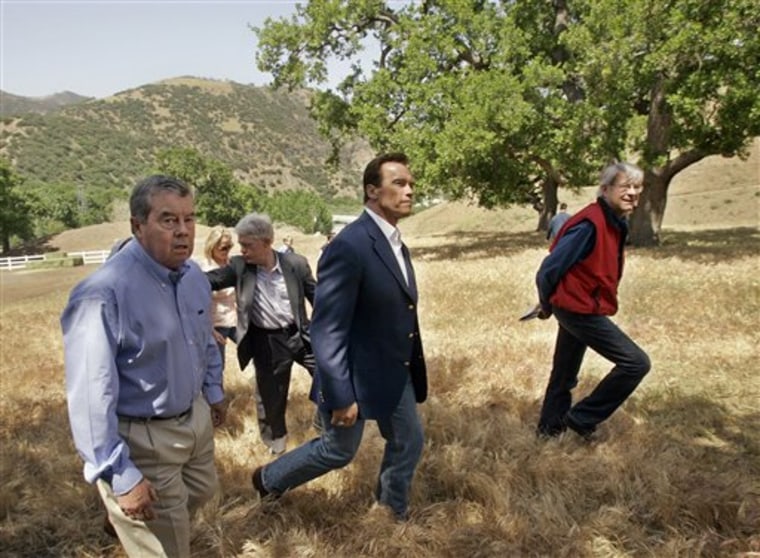A group of environmentalists and the owners of a large stretch of wilderness have reached a deal that would set aside the largest parcel of land for conservation in California history.
After years of legal tussles, conservationists including the Sierra Club have agreed not to challenge proposed development on the sprawling Tejon Ranch north of Los Angeles in exchange for close to 240,000 acres, in a deal announced Thursday by officials including Gov. Arnold Schwarzenegger.
At 375 square miles, the preserve of desert, woodlands and grasslands would be eight times the size of San Francisco and nearly the size of Los Angeles, said Bill Corcoran, the Sierra Club's senior regional representative.
"There is, in my opinion, no other place like it in California — it's unrivaled in the diversity of native wildlife and plants," said Corcoran, who helped negotiate the deal. "Tejon is key to us because it's the only place where the Sierra Nevadas, the coastal range and Mojave Desert and Central Valley all meet."
Tejon Ranch sits atop the Tehachapi Mountains 60 miles north of Los Angeles and is home to elk, wild turkeys, coyotes, bears and eagles, as well as a critical habitat for condors.
The Tejon Ranch Co. has been trying for years to develop three projects, or 10 percent of the 270,000 acre ranch, while appeasing environmentalists.
The other groups that have signed on are the Natural Resources Defense Council, Audubon California, Planning and Conservation League and Endangered Habitats League.
In 2005, the company and a national land trust hailed an agreement to sell more than one-third of the ranch for use as a nature preserve. That agreement, however, failed to satisfy the Tejon Natural Heritage Park Committee, a coalition of 12 conservation groups.
Less than a year later, another promising agreement fell through. The developer promised to set aside 100,000 acres as a natural preserve but environmentalists wanted more than double that size.
At the time, Sierra Club executive director Carl Pope and other environmental leaders said they would make the Tejon Ranch their top priority in California. Conservationists threatened to unite and file a lawsuit against the developer under the federal Endangered Species Act.
Instead they went back to the negotiating table.
"After nearly two years of negotiations, which were often difficult but always in good faith, we have achieved an unprecedented agreement protecting close to 90 percent of the ranch," Corcoran said.
One group remains opposed
At least one front remained, however. The Center for Biological Diversity, which walked away from the talks in 2007, denounced the pact on grounds it allows for the largest development ever proposed in the state and would harm the population of the endangered California condor.
"On paper the deal sounds good, but a close examination shows that very little is gained biologically and far too much is sacrificed," Peter Galvin, the group's conservation director, said in a statement.
The Tejon Ranch Co. is dedicating 178,000 acres and about 62,000 will be purchased in part with state conservation bond money. While it is not clear how much the land will cost, the developer agreed to a state appraisal.
An independent conservancy will be set up to manage the land and the developer has agreed to donate some money for its upkeep, Corcoran said. The agreement also seeks to establish a large state park that will be open to the public.
"In my opinion it's a near certainty that California will never again see a private land conservation agreement of this size and ecological importance," Corcoran said.
